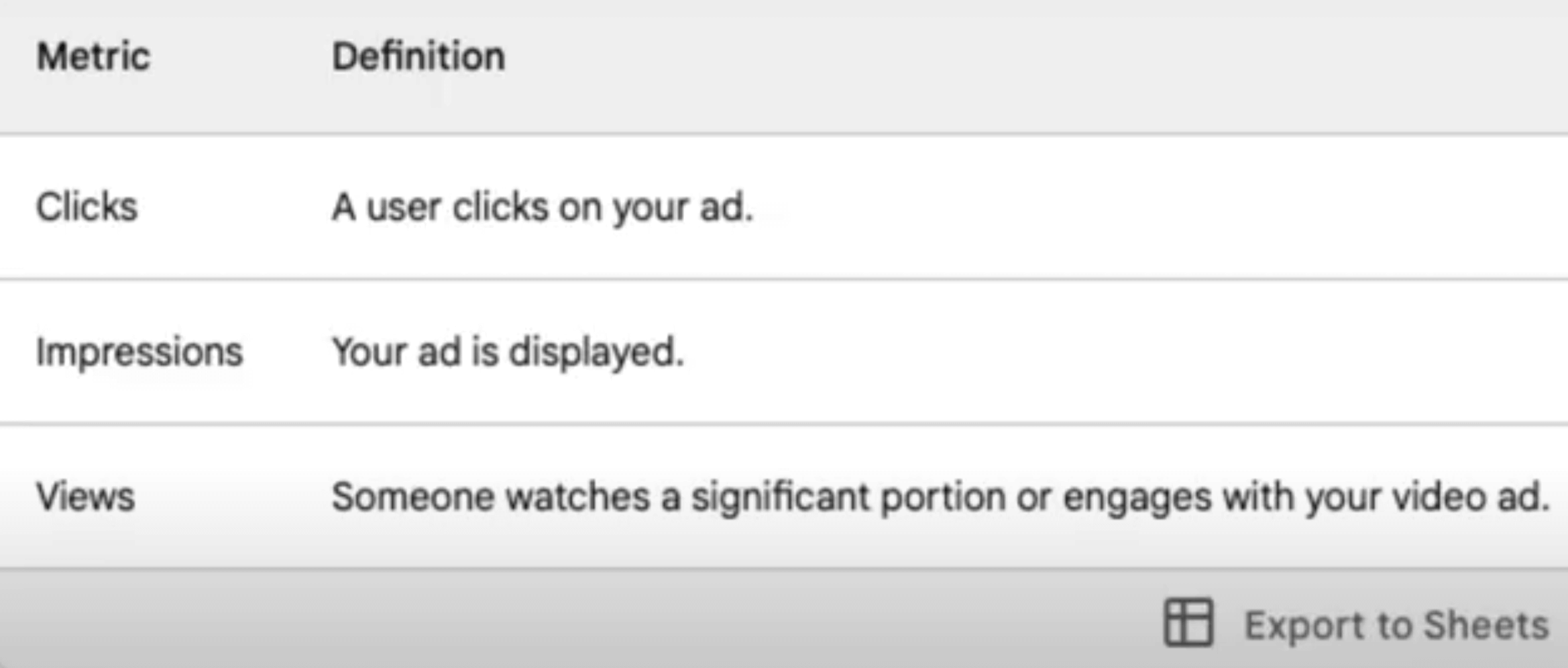Clicks vs Impressions vs Views
When it comes to Google Ads, there are a ton of metrics to make sense of. I get it - it can feel overwhelming trying to understand what all those numbers actually mean!
But here's the good news: you only need to focus on a few key metrics to have a successful Google Ads account. In this article, I'll explain three top-level metrics you need to know and how to use them to optimize your campaigns.

Let's break down the differences between clicks, views, and impressions:
Clicks
A click is counted each time someone engages with your ad. This could mean clicking the headline, phone number, sitelink, or call-to-action button.
Clicks show interest and signal that your ad resonated with the user. Even if they don't make it to your site, it still counts as a click.
One exception: Google filters out fraudulent clicks. (but you still need to stop spam and junk leads!)
The Key Takeaway - Clicks demonstrate interest and engagement from users. Monitor clicks to understand how appealing your ads are.
Impressions
An impression is counted every time your ad appears on a search results page or site on the Google Network. Your ad doesn't need to be front and center - as long as it loads on the page, it counts as an impression.
To calculate the click-through rate (CTR), divide your clicks by impressions. For example, if you had 100 impressions and 2 clicks, your CTR would be 2%.
The Key Takeaway - Impressions show how often your ads are seen. Use impressions to calculate CTR and gauge ad relevance.
Views
For video ads, views specifically track how many people watch a substantial portion of the video or engage with it.
The threshold for a view varies based on the video ad format:
- In-stream ads: 30 seconds, the full video, or engagement
- In-feed ads: When the video watch page loads after clicking the thumbnail
The Key Takeaway - Views measure video ad engagement. Optimize based on view rate and retention to improve visibility.
Putting It All Together
While clicks, views, and impressions measure different things, they work together to showcase your Google Ads performance.
Analyze these metrics to identify opportunities - like improving ad relevance or compelling copy. A low CTR, for example, could signal that your ads aren't connecting with your audience.
The right combination of clicks, views, and impressions will take your account to the next level. Focus on the metrics that matter most and let the results speak for themselves.
Need more Google Ads tips? Grab my free cost-cutting cheatsheet to maximize your budget: www.scottredgate.com/cheatsheet
Stop Wasting Money Marketing Your Business Online
Join my email list to get your copy of the Online Marketing Jumpstart PDF!
We hate SPAM. We will never sell your information, for any reason.


